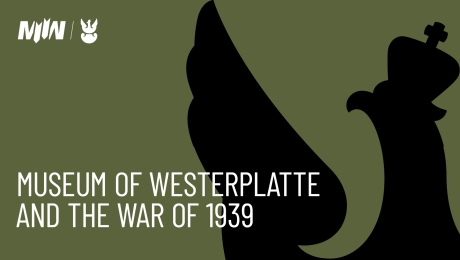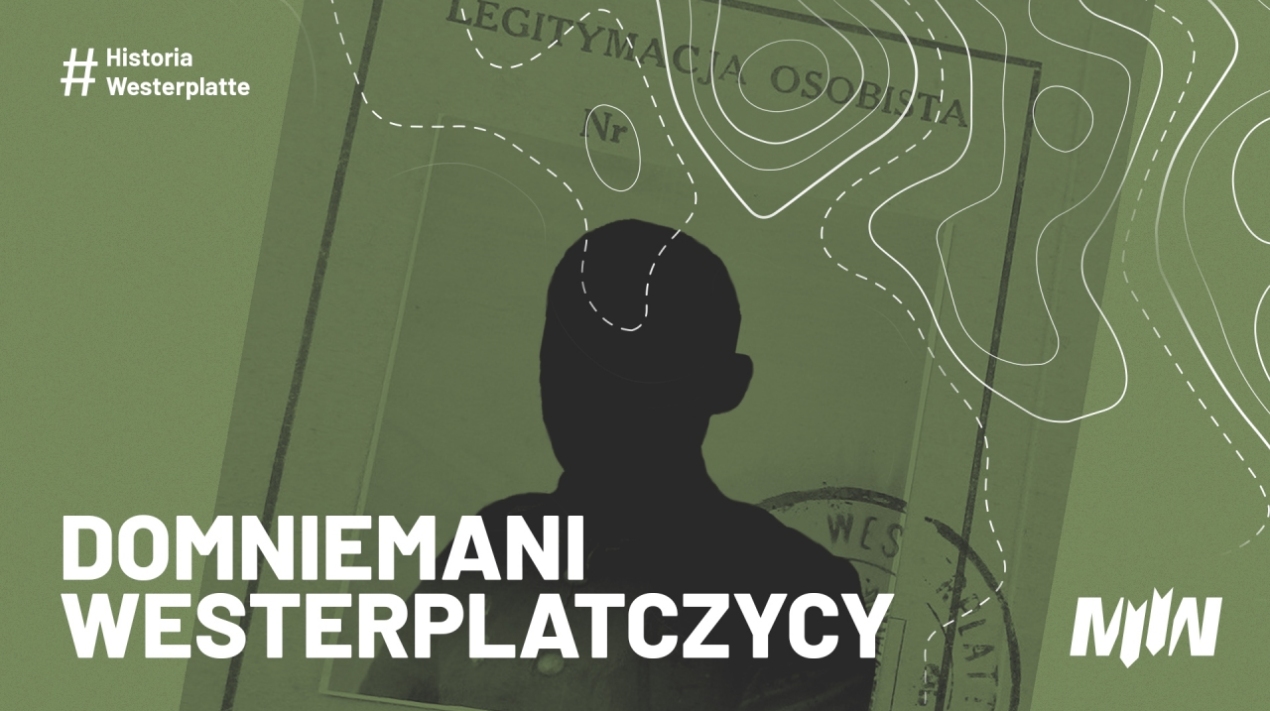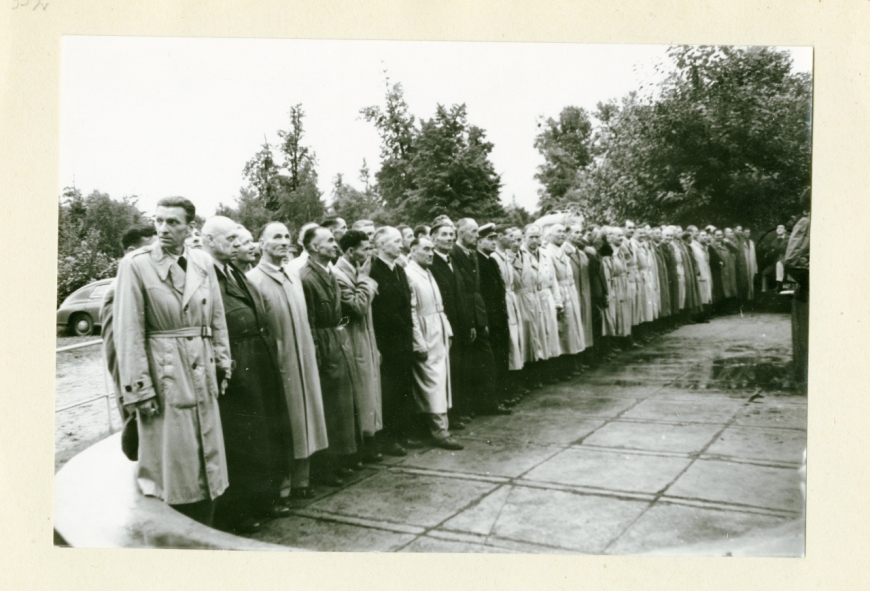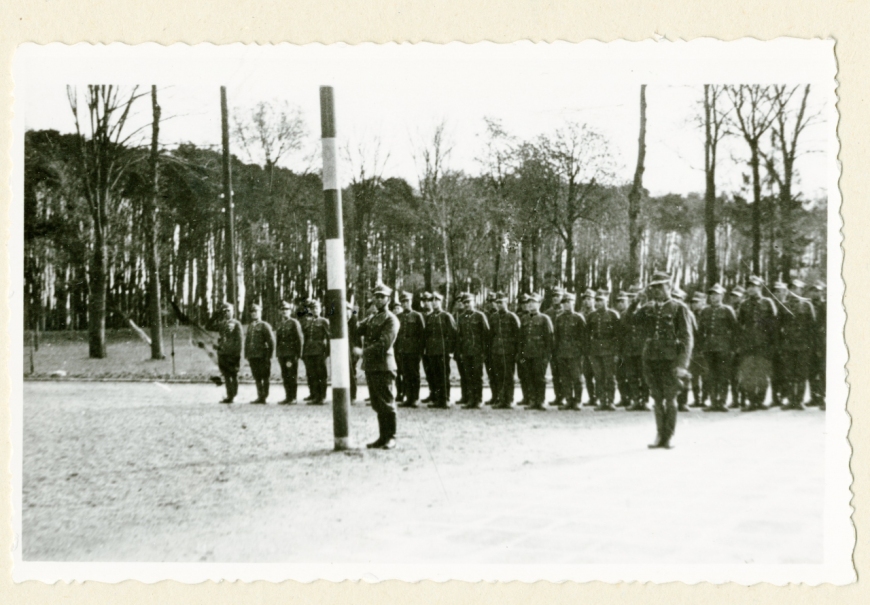#WESTERPLATTEHISTORY - PRESUMED WESTERPLATTE DEFENDERS
Over the years, especially during periods of increased interest in the topic of Westerplatte, new, unverified, and therefore presumed Westerplatte defenders have emerged. None of the surviving archival documents confirm the presence of these individuals on the peninsula in September 1939. This phenomenon has become one of the key issues in the research conducted on Westerplatte: whether a person is merely impersonating a defender or could they be a forgotten hero? To fully answer this question, each of these cases must be examined individually. Depending on the researchers focusing on the Military Transit Depot, the list of alleged defenders usually contains several to several dozen names. For many years, the verification of these claims was undertaken by historians, including Stanisława Górnikiewicz, a researcher on Westerplatte history. Now that all of the Westerplatte defenders have passed away, we can only speculate about what led people to claim membership in this prestigious group. There were certainly many reasons.
Documents produced by the Polish side, including the orders of the commander of the Military Transit Depot, end in mid-August 1939. Based on fragmentary surviving copies and other clues, it is assumed that the commander of the garrison issued at least one more order by the end of August 1939, which most likely did not survive to the present day. This, along with the recorded entries and comparisons, suggests that there were more than 208 soldiers present on Westerplatte in September 1939, further legitimizing the concept of a larger number of defenders than those officially confirmed. This is what people who claimed to be Westerplatte defenders after the war, but were not found on the crew lists in the early years, as well as the sporadic discovery of real but forgotten Westerplatte defenders, became the subject of numerous discussions among the group of former garrison soldiers. Usually, it was these former defenders who tried to verify all claims. However, over the years, this became increasingly difficult, and the stories of potential defenders were both detailed and contained accounts suggesting further reinforcements to the garrison, which supposedly occurred until the last days of peace in 1939. The Westerplatte community, which eventually split into several smaller subgroups, was unable to independently verify the claims of unconfirmed Westerplatte defenders. They turned to researchers for help with this issue.
In the partially preserved correspondence (which initially went to the Westerplatte Defenders Association, and later, in the 1960s, to Lieutenant Leon Pająk, the highest-ranking officer from Westerplatte at that time), there is a large collection of letters from people wanting to invoke their service during the defense of Westerplatte. Upon detailed analysis of these letters, it is not surprising that they contain a multitude of digressions and deviations from the main topic of the defense of Westerplatte. One can notice a certain regularity that the number of presumed Westerplatte defenders increased in the 1960s with the proliferation of books on the subject of Westerplatte, especially the repeatedly reprinted work by Zbigniew Flisowski, "Westerplatte," in which numerous collected and published accounts of defenders vividly described the battles at the Military Transit Depot.
The topic of false Westerplatte defenders became a starting point for analyzing the fate of one of the recognized defenders. Most likely, the specified defender of the Military Transit Depot on Westerplatte, as detailed in the orders, was sent to a hospital in Gdynia in the last days of August 1939. This was due to the lack of medical facilities at the depot and the relatively serious health condition of the Polish soldier. This hypothesis is based, on the one hand, on the daily orders of the commander of the Guard Unit and, on the other hand, on the critical analysis of his memoirs, primarily related to events that occurred after the depot's surrender. This Westerplatte defender was supposedly injured during the fighting and, after receiving medical attention, continued to fight until the surrender. After internment and transport to Stalag IA in mid-September 1939, he allegedly initiated a successful escape during which he encountered scattered Polish cavalry units. Thanks to them, he arrived in Warsaw a few days later, where he ended up in a hospital due to an untreated wound. He was subsequently evacuated, one of the last medical trains, and arrived in Vilnius, where he was placed in a hospital in Antokol. After the Russians entered the city, he was supposedly transported to the vicinity of Kaunas, to Rokiskis, where he worked as a forced laborer for about a year. In the next transport, he was taken to Kozielsk, where he was supposed to wait for the arrival of General Władysław Anders. Ultimately, he was incorporated into the emerging Kościuszko Division in Sielce nad Oką, with which he completed the full combat route leading west. He fought in battles, including Lenino, the Pomeranian Wall, and participated in the capture of Berlin. After the war, he returned to Poland and settled near his hometown in southern Kielce.
There were more examples of such stories. Some of them may seem very plausible, while others were completely implausible, including an account of joining the Westerplatte garrison after the bombing on September 2nd, 1939. Interestingly, when comparing different versions of memoirs written at different times, it is clear that they underwent constant modifications. It is no longer possible to specify whether these changes were the result of external edits to the same texts or represented different versions provided by the alleged Westerplatte defender after the war. Only a thorough analysis and the discovery of previously unpublished documents can partially verify past events.
These documents do sometimes support the story presented by those claiming to be Westerplatte defenders. However, it is essential to approach all accounts provided by alleged defenders critically, especially those given many years after the war. Often, the versions of events presented at that time had no basis in reality. The string of fortunate coincidences that usually made up the story of a particular Westerplatte defender should be treated with a great deal of caution and consideration of other possible explanations for any person's presence on Westerplatte.


















